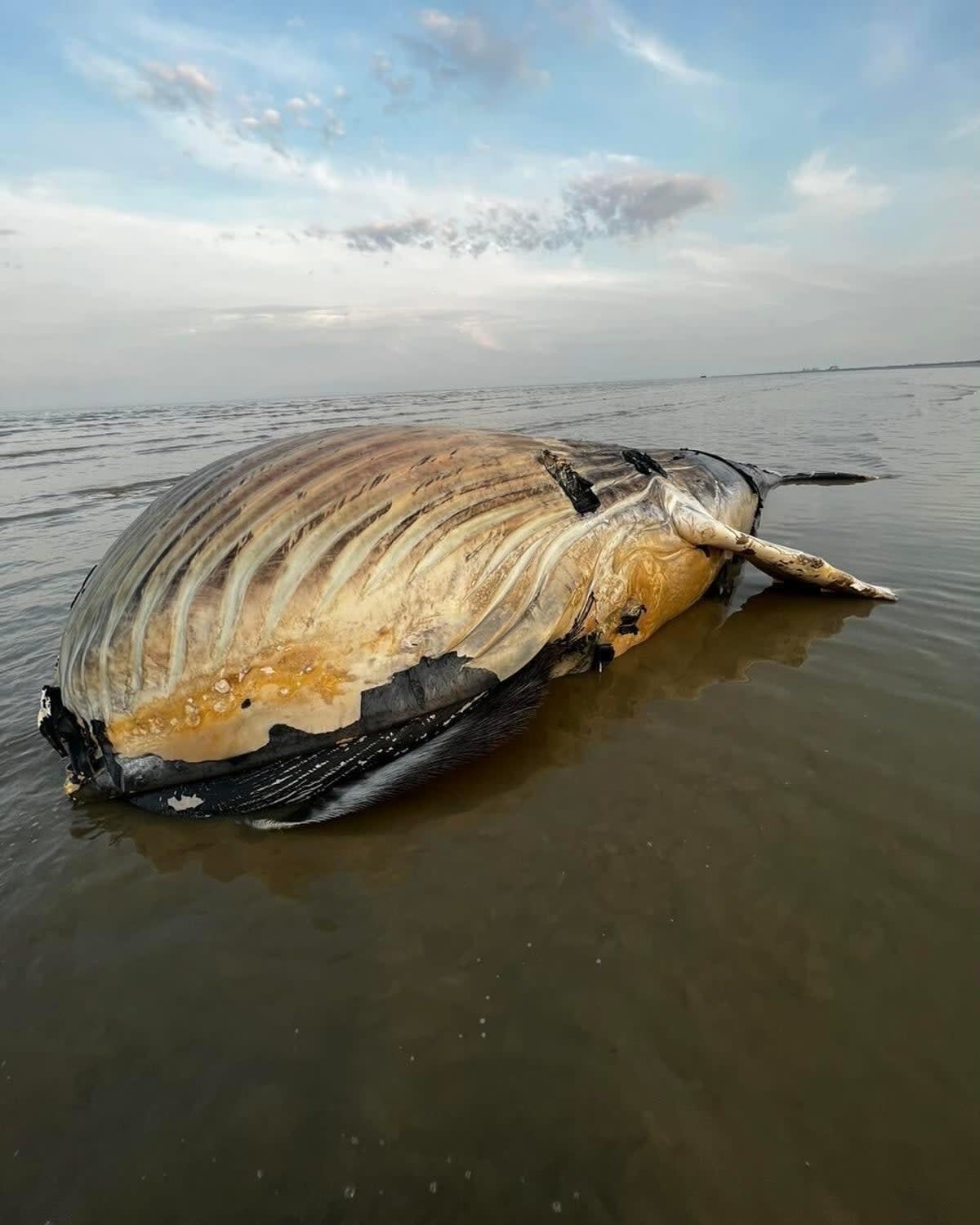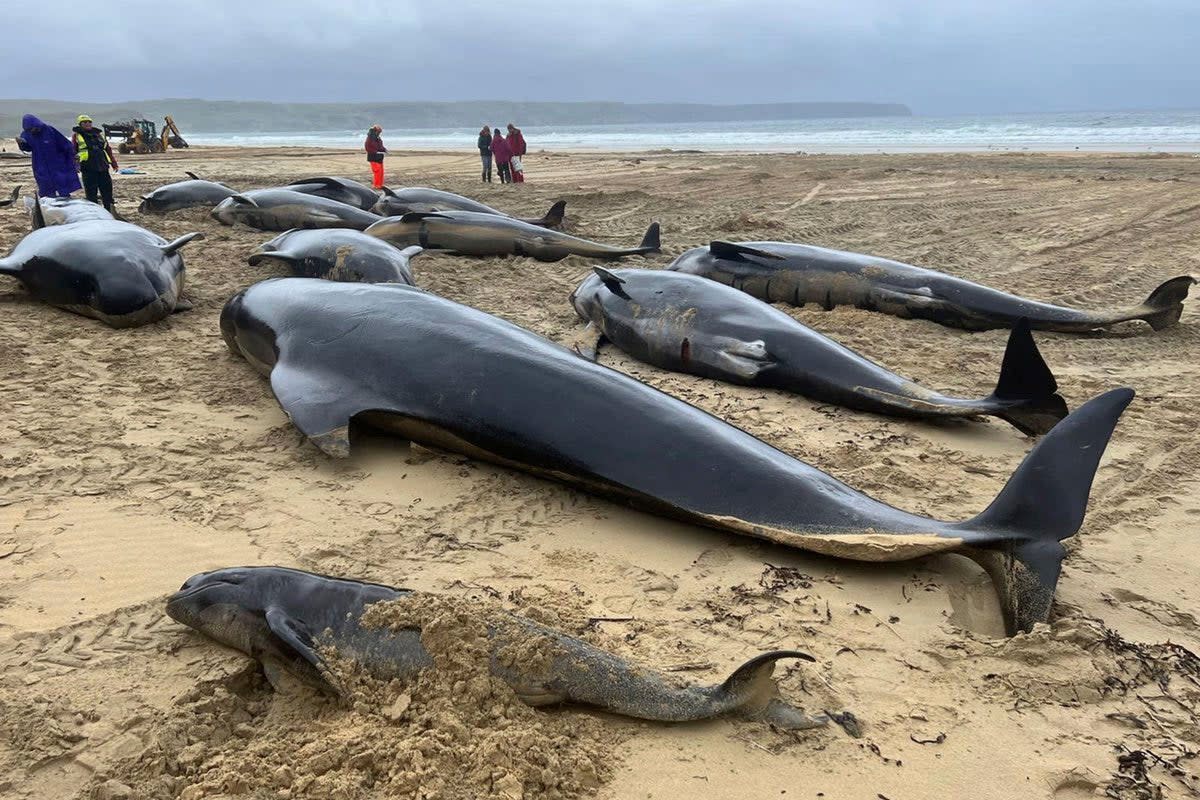Urgent warning to avoid popular tourist beach after dead whale found

An urgent warning is in place for tourists to avoid a popular beach after a dead whale was found washed up.
The body of a 30ft minke whale was found washed up on the shore of Romney Marsh in Kent on Thursday evening.
Locals have now been warned not to approach the carcass due to the deep mud between the animal and the shoreline.
The body of the dead whale is still on the beach but HM Coastguard in Romney Marsh said it is investigating how best to remove the dead animal from the shore.
Local Paul Crawford told KentOnline he came across the dead whale at 5.30pm yesterday.
“I felt humbled to see it. But I also felt a bit of sadness,” he said.
“They’re such beautiful and amazing animals.”
In a statement, HM Coastguard said: “The Romney Marsh Coastguard Rescue Team was tasked to an object floating on the water edge at St Mary’s Bay.
“Once the object had been located it was confirmed to be a deceased whale.
“Further investigations were carried out to record statistics of the animal for future analysis.
“The whale was also determined to be a Minke Whale.
“Possible further investigations will take place to determine how best to remove the animal from the beach.
“In the meantime, it is strongly advised NOT to venture out to the animal due to the deep mud (otherwise known as quicksand) between the animal and the shoreline.”
Common minke whales can weigh as much as 5,600kg - more than a family car.

Last week, a pod of 55 pilot whales died after they washed up on Traigh Mhor beach in North Tolsta on the Isle of Lewis.
Experts said that pilot whales have strong social ties, so when one “gets into difficulty and strands, the rest follow”.
The British Divers Marine Life Rescue (BDMLR) initially stated the whale pod had become stranded “due to one female giving birth”.
However, researchers from the Scottish Marine Animal Stranding Scheme (SMASS) who conducted post-mortem examinations on three of the “top priority animals” said what was earlier believed to be a prolapse was actually a placenta – highlighting “issues with birthing”.
“This would have caused obvious stress to the individual, and due to the close family ties of this species, could have potential further significance for all of the members of the pod,” they wrote in an Instagram post. “Further analysis over the next several days will help us to better understand what happened.”
The stranding was the largest on record in UK waters.
